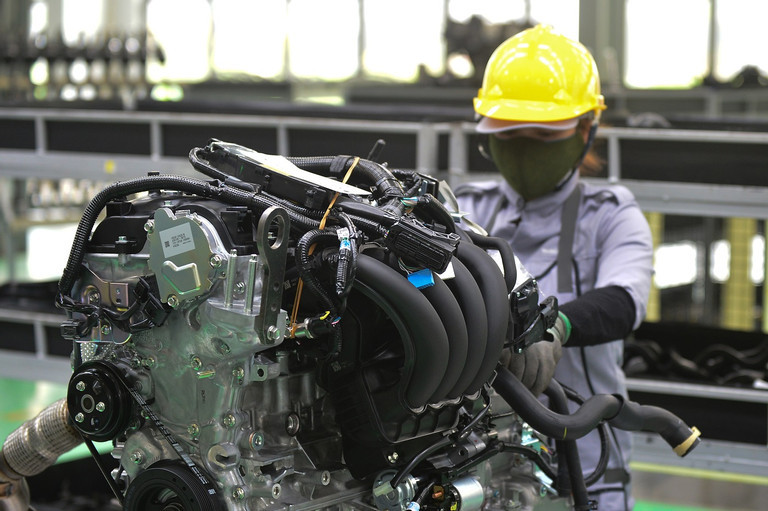
According to Tuat, there are about 1,500 Vietnamese enterprises in supporting industries, mostly in the fields of mechanical engineering, electrical engineering and electronics, plastics, rubber and chemicals.
The enterprises have experienced a tough year in 2023 and seen their conditions getting worse. The average revenue of supporting industry enterprises dropped by 40 percent in 2023 because of the decline in orders from many markets, especially Europe.
Tuat has also expressed concern about the wave of Chinese enterprises flocking to Vietnam, which ‘is very strong’. The Chinese enterprises come together with satellite enterprises, which form up a production workshop chain specializing in manufacturing components and spare parts for export to Europe and North America. With exports from Vietnam, Chinese enterprises are able to escape technical and tariff barriers set by importing countries.
Meanwhile, Vietnam’s enterprises in supporting industries are fewer than foreign ones. This is partly attributed to high lending interest rates. Vietnamese enterprises have to pay 10-12 percent per annum for domestic loans, while South Korean enterprises have to pay 2 percent in interest rate.
Regarding the need to join the global supply chain, Tuat said Vietnamese enterprises have to manufacture clusters of components instead of individual parts. “If you can only produce springs, this doesn’t mean you are a link of the global supply chain,” Tuat said.
Minister of Industry and Trade Nguyen Hong Dien said at the conference of the industry and trade sector reviewing operations in 2023 that Vietnam will focus on developing fundamental industries, important industries and supporting industries. Vietnam will prioritize industries using new and high technologies, including semiconductor ICs and mineral exploitation.
Regarding trade in 2023, Dien said Vietnam gained a record trade surplus for the eighth consecutive year ($30 billion), three times higher than that of the year before.
Vietnam will exploit relations with large economies to grasp opportunities to be brought by the wave of multinationals allocating investments to third countries, especially in fields where Vietnam has advantages. These include the electronics industry, digital infrastructure, logistics infrastructure, clean energy, new materials, chips and semiconductors.
Vietnam’s industrial production has experienced a tough year with a sharp decrease of 8 percent in January 2023 compared with the same period 2022 and recovery in the last months.
Luong Bang